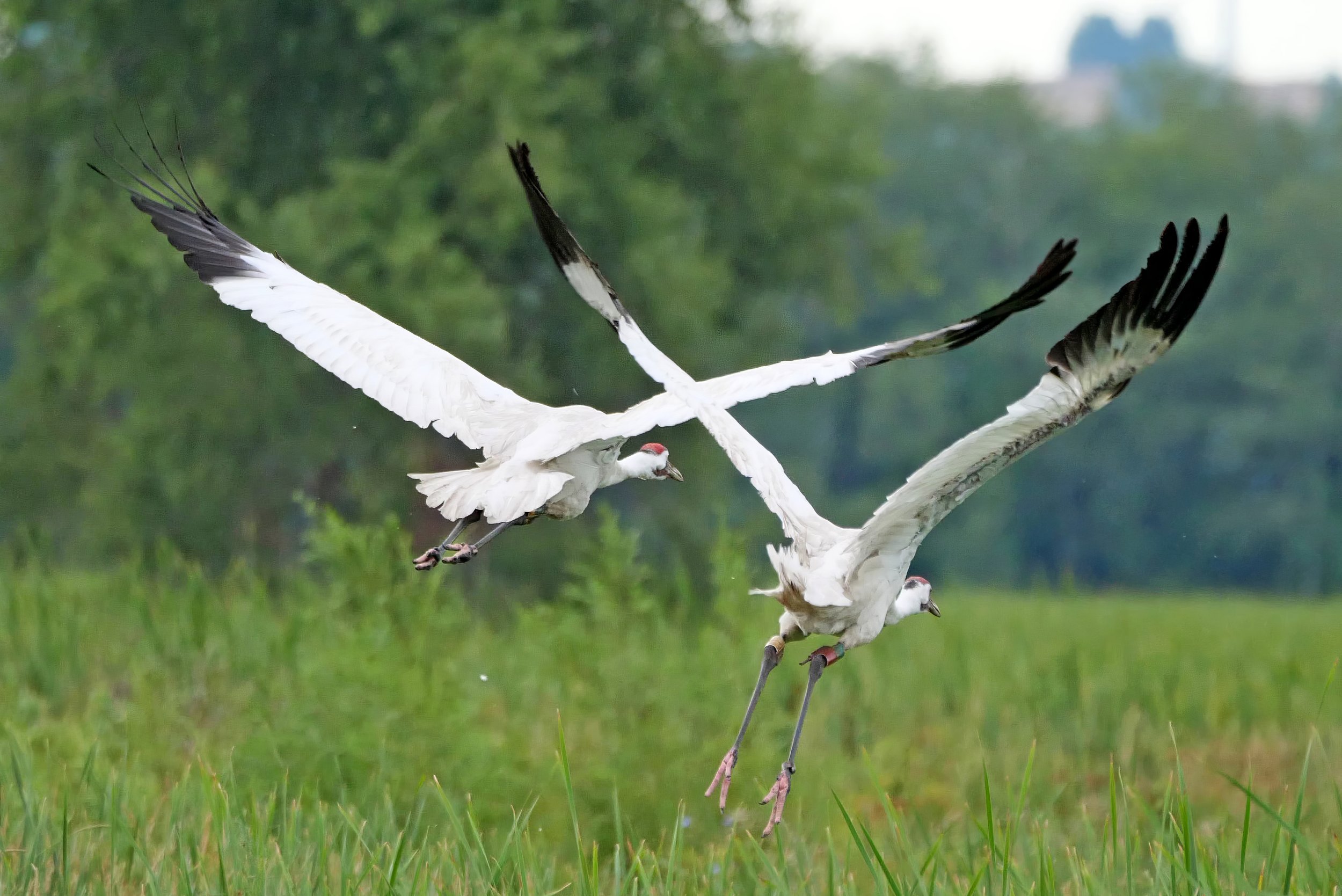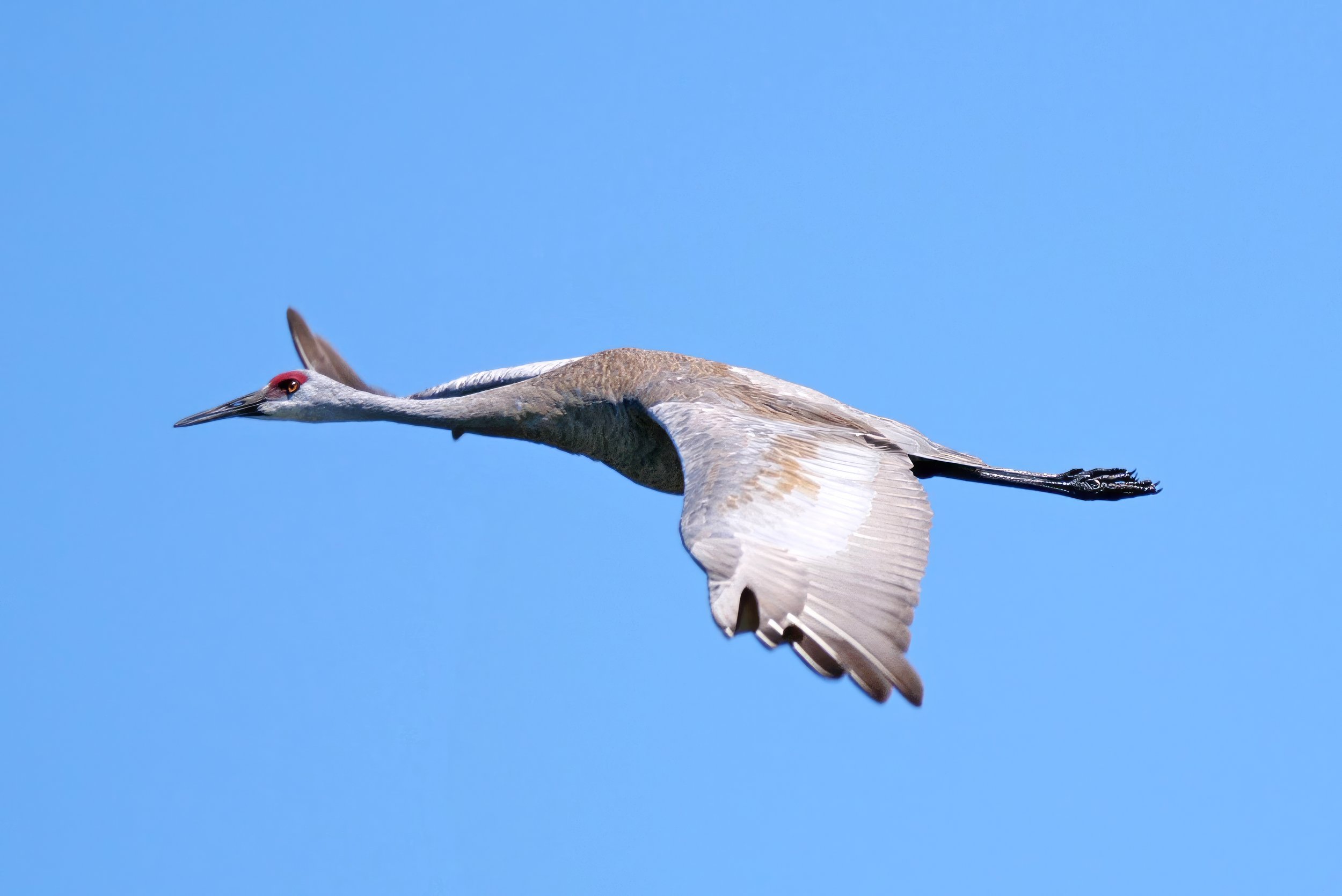Protecting the Precious Whooping Crane and its Wildlife Companions in Wisconsin
Nature has gifted us with wonders that continue to amaze and inspire us. Among these awe-inspiring gifts are two crane species that grace the landscapes of Wisconsin—the elegant Sandhill Crane and the endangered Whooping Crane. These majestic birds captivate our hearts and play a crucial role in maintaining the delicate balance of our ecosystem. As we embark on a journey to protect and cherish these rare creatures, let's explore why safeguarding the Whooping Crane is paramount and how we can make a difference.
The Whooping Crane's Significance:
The Whooping Crane (Grus americana) is an iconic species, once on the brink of extinction, with only 15 individuals remaining in the wild in the 1940s. Their population has increased thanks to dedicated conservation efforts, but they still face significant threats. These graceful birds are not merely a symbol of elegance; they serve as ecological indicators, reflecting the health of their wetland habitats. As apex predators, their presence indicates a balanced ecosystem, contributing to the health of plants, animals, and water bodies.
Two banded Whooping Cranes in flight. Photo by Dexter Patterson
The Role of Sandhill Cranes:
The Sandhill Crane (Antigone canadensis) is significant in Wisconsin's ecosystem. They, too, faced near-extinction in the state due to habitat loss and hunting, but thanks to conservation initiatives, their numbers rebounded. As opportunistic feeders, these cranes contribute to seed dispersal, helping plants grow in various areas and maintaining biodiversity.
Sandhill Crane in flight. Photo by Dexter Patterson
Tips for Protecting Rare Birds:
Support Conservation Organizations: Get involved with local and national conservation groups like Saving Cranes that work tirelessly to protect endangered birds and their habitats. You can make a significant impact by volunteering, donating, or participating in awareness campaigns.
Respect Wildlife and Habitats: When birdwatching or exploring nature, maintain a respectful distance from the birds and their nests. Avoid disturbing their habitats, and follow ethical guidelines for wildlife observation.
Advocate for Legislation: Stay informed about wildlife protection laws and advocate for stronger regulations to safeguard endangered species and their habitats. Support candidates who prioritize environmental conservation.
Promote Wetland Preservation: Wetlands are crucial habitats for many bird species, including cranes. Support efforts to protect and restore wetland areas in your community.
Reduce Plastic Usage: Plastic pollution severely threatens wildlife, including birds. Minimize single-use plastic daily to prevent harm to these creatures and their habitats.
Witnessing the beauty of two crane species in their natural habitat is a privilege and a reminder of the importance of preserving our natural world. While we celebrate the revival of the Sandhill Crane population in Wisconsin, we must continue our efforts to protect the endangered Whooping Crane. By uniting in conservation initiatives, promoting sustainable practices, and raising awareness, we can ensure that future generations get to cherish the magnificence of these precious creatures. Let's pledge to be guardians of our environment and protect the delicate balance of nature for years to come. Together, we can make a difference.


